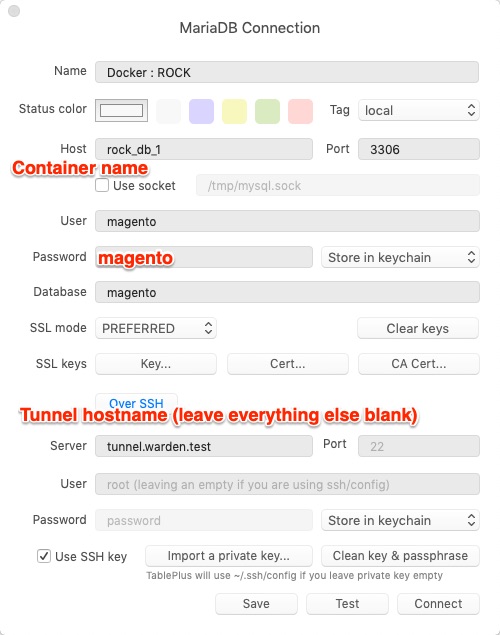

For example, ddev composer install will do a full composer install for you without even needing Composer on your computer. ddev composer runs Composer inside the container.ddev import-db and ddev export-db import or export SQL or compressed SQL files.ddev heidisql (Windows/WSL2 only, if installed) gives access to the HeidiSQL database browser GUI.ddev sequelpro, ddev sequelace, and ddev tableplus (macOS only, if the app is installed) give access to the Sequel Pro, Sequel Ace, or TablePlus database browser GUIs.ddev mysql gives direct access to the MySQL client and ddev psql to the PostgreSQL psql client.ddev delete destroys the database and DDEV’s knowledge of the project without touching to your code.ddev poweroff stops all resources that DDEV is using and stops the Mutagen daemon if it’s running.ddev stop stops a project and removes its memory usage (but does not throw away any data).ddev exec executes a command inside the web container.ddev ssh takes you into the web container.ddev describe gives all the info about the current project.ddev list shows current projects and their state.ddev launch opens a web browser showing the project.ddev config configures a project’s type and docroot.For example, ddev help snapshot will show help and examples for the snapshot command. Each command also has help using ddev help or ddev command -h. There are commands to configure a project, start, stop, describe, etc. Type ddev or ddev -h in a terminal window to see the available DDEV commands. Debugging & Profiling Debugging & Profiling.In-Container Home Directory and Shell Configuration.Defining Additional Services with Docker Compose.Additional Service Configurations & Add-ons.Using the `ddev` Command Using the `ddev` Command Table of contents.


 0 kommentar(er)
0 kommentar(er)
